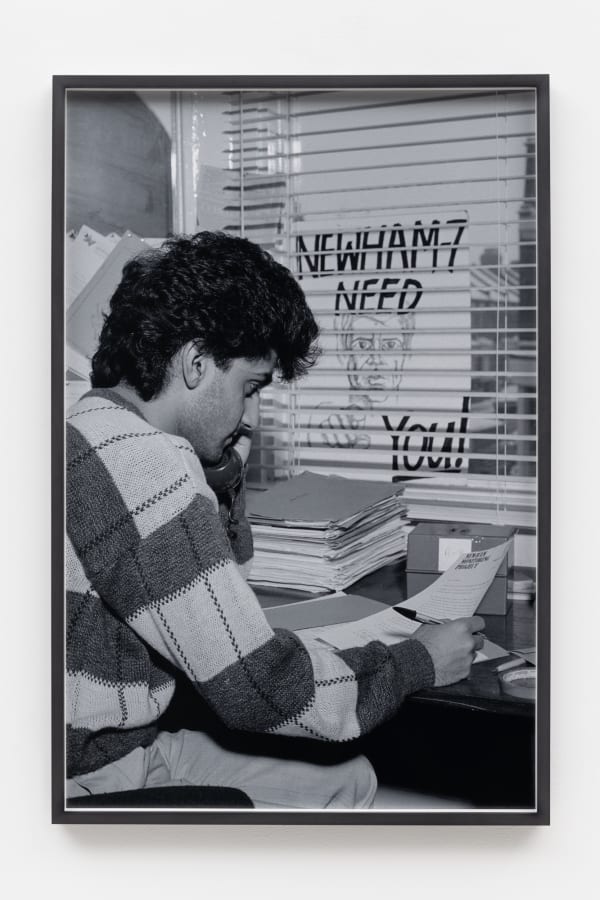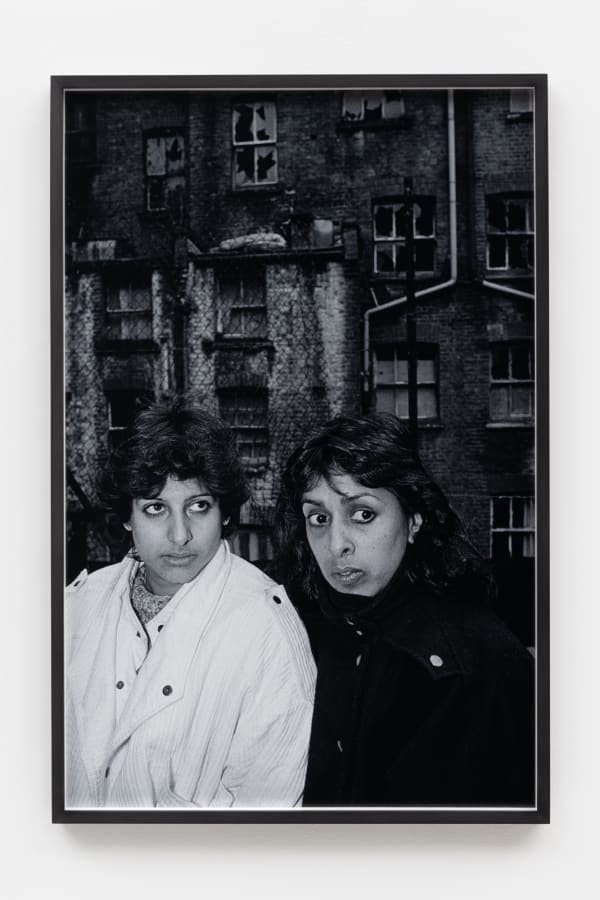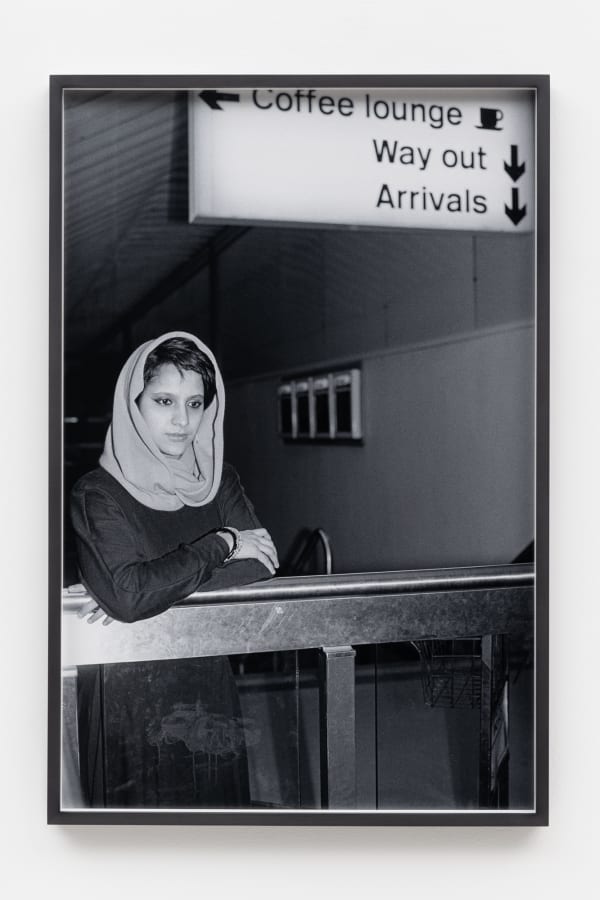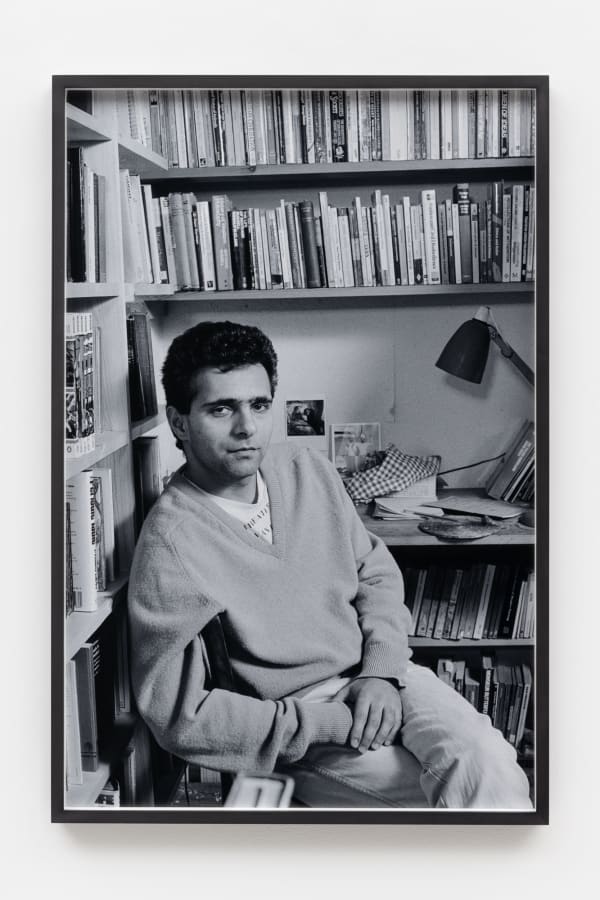Sunil Gupta: Black Experience
Hales is delighted to announce Black Experience, a solo exhibition of photographs by Sunil Gupta. The show exhibits a series of 10 works commissioned in 1986 for a pivotal exhibition titled Reflections of the Black Experience at Brixton Art Gallery. For the first time since the 1986 exhibition, Black Experience is presented in its entirety and in a larger format. The exhibition coincides with Gupta’s solo show The New Pre-Raphaelites at The Holburne Museum, Bath (24 September 2021 – 19 January 2022). In December, Hales will present a solo presentation of Gupta’s series Lovers: Ten Years On at Art Basel Miami Beach.
Gupta was born in India in 1953 and migrated to Canada as a teenager in the late 1960s. Seeking new experiences, he followed his partner to New York City in 1976 then to London in 1977. He went on to receive a Diploma from West Surrey College of Art & Design, Farnham, UK in 1981; an MA from Royal College of Art, London, UK in 1983; and a PhD from the University of Westminster, London, UK in 2019 with a thesis titled “Queer Migrations.” Gupta lives and works in London.
Over a career spanning more than four decades, Gupta has maintained a visionary approach to photography, producing bodies of work that are pioneering in their social and political commentary. The artist’s experience of multiple cultures informs a practice dedicated to themes of race, migration and queer identity – his own lived experience a point of departure for photographic projects, born from a desire to see himself and others like him represented in art history.
The exhibition and series title, Black Experience, needs to be understood historically, in the social and academic context of 1980s post-colonial and post-modern Britain— a time when the prevailing term to describe any person of colour was Black. South Asian people were subsumed into the broad category, that was part of a British concept of political Blackness. The Black Arts Movement in the UK included artists of North and sub-Saharan African, Caribbean and Asian descent, ‘referring much to shared experiences of disenfranchisement as to shades of skin.’[1]
The 1986 exhibition curated by Monika Baker; Reflections of the Black Experience was part of a wider cultural programme of events run by the Greater London Council (GLC). Gupta had become involved with the GLC after people from the Ethnic Minority Unit had come to his degree show at the RCA in 1983. The show marked the first time students had organized a separate show for Black artists. From that point on Gupta began volunteering for the GLC, which was under the Labour leadership of Ken Livingstone, in direct opposition to Margaret Thatcher’s Conservative policies. It was a time of radical and experimental politics and for Gupta, there was a real feeling of making positive change. During the 1980s the council started to form guiding principles and pathways to try and better cater to the needs of minorities, under a ‘rainbow culture’ system of different, diverse and intersecting identities – grouping the elderly, LGBT, Black and Asian people under one umbrella.[2] Gupta moved away from the commercial artworld to become more politically involved. He would help to vet GLC advertisements as well as assisting with the promotion of anti-racist materials and positive imaging. In Gupta’s role he learnt about local town hall cultural politics, how funding works and the importance of visual arts in politics.[3]
Reflections of the Black Experience invited ten ‘Black’ artists to make ten photographs ‘to document the social, cultural and political changes in Britain today. Their brief was defined in five broad categories: economic, cultural, political, sexuality and gender.’[4] Gupta was one of three South Asian artists included, which spurred a desire to visually represent the South Asian community and his distinct experience in the exhibition. Following some of the guiding parameters of the GLC rainbow umbrella terminology, Gupta titled each work with one word, such as ‘Elderly’ or ‘Gay.’ Then with the stereotypical occupation of ‘Shopkeepers’ as well as generic occupations not previously associated with South Asians, ‘Artist,’ ‘Writer’ and ‘Educator.’ Works, ‘Fear’ and ‘Activism’ see a direct political engagement with the time. ‘Fear’ was made in response to racist attacks on Brick Lane, an area terrorised by the National Front, and depicts two scared women positioned in front of broken windows. ‘Activism’ shows Newham 7, an East London support Group and campaign set up in response to racially motivated violence in the area. ‘Gay’ includes Gupta himself and his partner at the time — this decision was made out of necessity as he could not find any queer South Asian people willing to be photographed. For the ‘Migrant’ picture, Gupta shows a woman at an airport, Shreela Ghosh – who was the first Asian character to appear in Eastenders. The Black Experience series is staged in a documentary style, to clearly convey the truth of the message and allows the viewer to see lived realities. Gupta has returned to this way of working throughout his career, in series such as Exiles (1987) and on a more elaborate scale for Sun City (2010).
Reflections of the Black Experience sparked many conversations, which led to open discussions in 1986 — if you had a camera, you could attend the meetings and join the discourse. The exhibition had brought together a group of individuals who, when Thatcher shut the GLC in that same year, developed into a loose grouping that met at the London New Technology Network in Camden Town.[5] These meetings and the encouraging enthusiasm directly led to the formation of Autograph, the Association of Black Photographers which launched at the Photographer’s Gallery in June 1988. The formalising of Autograph as a cooperative charity was in order to receive funding from the Arts Council, who awarded the group a grant for a research study into Black photography as a new idea. Monika Baker and Gupta worked in the office, part of a DIY generation, they were the administrators and curators who were, along with the rest of the membership, running exhibitions, publications, a library, and an education programme. Excited and ambitious, they were creating a unique organisation that still runs to this day.
Black Experience is a key body of work that gives insight to a specific time in British history and culture. Gupta’s personal and political engagement with the subject is of great importance, he states:
“Politically, this has been the most important project that I have ever participated in. It brought me into contact with grassroots politics and the inner workings of local political power, and it gave me a sense of the body politic in which my personal interests in photography could play a part.”[6]
Gupta’s work is in many public collections, including the Museum of Modern Art, NY, USA; Tate Britain, UK; National Gallery of Canada; Museum of London, UK; Philadelphia Museum of Art, PA, USA; Tokyo Photographic Art Museum, Japan; the Royal Ontario Museum, Canada; George Eastman Museum, NY, USA; Arts Council, UK; Government Art Collection, London, UK; and Harvard University, MA, USA. He has published and edited many books including: Christopher Street (2018); Delhi: Communities of Belonging (2016); Queer (2011); Wish You Were Here (2008); Pictures from Here (2003); Disrupted Borders (1993); Ecstatic Antibodies (1990); and an Economy of Signs (1990). In 1988, Gupta co-founded Autograph – the Association of Black Photographers, and in 1992 he was awarded an INIVA curatorial franchise, the Organisation for Visual Arts (OVA), aimed at promoting a better understanding of culturally diverse visual arts practices. In 2020, Gupta was included in Masculinities: Liberation through Photography - an expansive exhibition at the Barbican, London, UK which in 2021 toured to Les Rencontres de la Photographie Arles, France. He was recently the subject of a major touring retrospective, From Here to Eternity – a collaboration between The Photographers’ Gallery, London, UK; and the Ryerson Image Centre, Toronto, Canada.
[1] Bailey, D., Baucom, I., Boyce, S. Shades of Black: Assembling Black Arts in 1980s Britain, Durham; London: Duke University Press, 2005
[2] Sealy, M. From Here to Eternity Sunil Gupta, London: Autograph, 2020
[3] Sunil Gupta interviewed by Lisa Pierre, 2021 [Accessed: 15.07.21] https://www.rca.ac.uk/for-alumni/my-generationrca/sunil-gupta/
[4] Baker, Monika. Reflections of the Black Experience, 1986
[5] Sunil Gupta interviewed by Louisa Buck, 40 Years 40 Artists Sunil Gupta, 2021 [Accessed 15.07.21] https://www.a-n.co.uk/an40/fortieth-feature/40-years-40-artists-sunil-gupta/
[6] Gupta S., Pictures from Here. London: Autograph, 2003, p32












